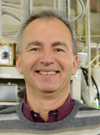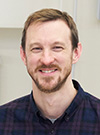利用者の声
2020
International evaluation report for Global Institute for Materials Research Tohoku: GIMRT

GIRMT has certified as one of 6 International Joint Usage/Research Center in November 2018 and the international advisory and steering committee was asked by IMR director to provide an
evaluation report for the activity in FY2018-2020 based on five key questions as below.
Summary
The broad scope and varieties of the program of GIMRT contribute to collaboration and the researcher’s needs. The bridge proposal scheme is effective and useful for international collaboration. There is a large percentage of international proposals and collaborations with high-profile and highly coordinated researches across the disciplines.
1. The numbers of the proposal and international fraction show the open access. The unique facilities and activities are recognized and are open for easy access. The flexibility of operation and various efforts under the covid pandemic support community.
2. The publication record, international joint papers, and high-profile outputs show the usefulness of the GIMRT program to produce significant scientific and technical outputs.
3. GIMRT program supported the research and the bi-directional international exchange of the young researchers, as shown by the fraction of the supported participants.
4. The quality of the GIMRT program is at a high international level. The program’s scheme, the availability of a broad range of support for young researchers, is the GIMRT program’s uniqueness.
5. We conclude that this program has been successful for international collaboration and recommend a continuation for the next term.
Recommendation for further improvement
1. The GIMRT program could be advertised more extensively and the communication about the possibilities for external users can be improved.
2. We recommend that the presence and the activity of GIMRT should be spread and announced more to both domestic and international communities using SNS.
3. Analyze the content of the publications and the contribution of GIMRT. Monitor the fraction of the international joint paper continuously.
4. Support for the young researcher is the unique and excellent points of the GIMRT program. Therefore, the continuation and the further improvement are strongly recommended.
On behalf of the committee
Names of committee member and affiliations
Prof. Arne Brataas, Norwegian University of Science and Technology, Norway
Prof. Yongmin Kim, Dankook University, Korea
Prof. Junichiro Kono, Rice University, USA
Prof. Jens Müller, Goethe-University Frankfurt, Germany
Prof. Somei Ohnuki, University of Science and Technology, Beijing, China
Dr. John M. Tranquada, Brookhaven National Laboratory, USA
Prof. Wei Zhang, Dalian University of Technology, China
Dr. Timothy Ziman, Institut Laue Langevin and CNRS, France
Prof. Yoshiki Nakanishi, Iwate University, Japan
Prof. Yukio Hasegawa, University of Tokyo, Japan
Prof. Hiroshi Numakura, Osaka Prefecture University, Japan
Prof. Ayako Yamamoto, Shibaura Institute of Technology, Japan
Prof. Satoshi Shioiri, RIEC, Tohoku University, Japan
Prof. Tomoyuki Akutagawa, IMRAM, Tohoku University, Japan
Prof. Shinichi Orimo, AIMR, Tohoku University, Japan
Prof. Tadashi Furuhara, IMR, Tohoku University, Japan (not involved in the evaluation)
2019
Opening new doors—new results leading to new questions

Denis Arčon
Jožef Stefan Institute, Slovenia, Professor
One of the main research topics in my group is magnetism in the presence of “spin frustration.” The target of this visit was the mixed-valence alkali sesquioxide compound Rb4O6. Rb4O6 is a unique system in its family that shows quantum magnetism, however its spin dynamics and other physical properties are not yet well understood. The purpose of the experiment at IMR was to explore the behavior of the spin dynamics of Rb4O6 at low temperatures and high magnetic fields to reveal its overall physical phenomena.
The High Field Laboratory for Superconducting Materials (HFLSM) at IMR is extremely well-known in the world as a facility that has a high level of instrumentations and offers a wide range of magnetic fields at one place. That’s an attractive point, because if it was in other laboratories, we would probably need to go around different facilities to conduct different types of experiments. At IMR, we have measured magnetic phase transition in Rb4O6 under high magnetic field up to 25 T—much higher than what we are able to measure at our home institution. Actually, we had various new results in this visit, but they also opened some new questions. It’s like finding a new door for next stage in the room of “25 T” we entered this time.
I’m also grateful for the GIMRT program, which allowed me to bring my student with me to perform experiments here. Coming to IMR with my student made it possible for us to work in shifts so we can experiment efficiently and maximize our time during our stay. It was also very important for the student to experience and see how the Japanese scientists carry out their research, and create new networks that may lead to more collaboration in the future. We enjoyed our stay at IMR, and we look forward to working together again soon.
GIMRT: Opportunities for optimal experimental conditions and new collaborations

Javier Campo
University of Zaragoza, Spain, Professor
I experimented at IMR for 10 days in order to conduct a collaborative research with Osaka Prefecture University (OPU). I am collaborating with Prof. Yuko Hosokoshi’s group at OPU from long time ago in the study of new magnets done without any metallic ion. Even several years ago, we supervised together a student who obtained a Dual Degree Doctorate. This research is one of the three pillars of my scientific project in Spain, which is the study of magnetic chirality. The other two pillars are the study of new molecular multiferroics compounds and the understanding of the effect of the thermal fluctuations and the stability of magnetic textures (solitons and skyrmions).
I have conducted joint researches with other Japanese universities for a while, but this was my first time experimenting at IMR. As my collaborative researchers said, the unique equipment at IMR provided excellent experimental conditions for us. For example, during the experiment at IMR, we used 20T-SM Magnet with a dilution refrigerator and observed low temperature physics down to 0.1 K in this purely organic magnet synthetized at OPU. In the laboratory at our home institute, we were only able to reach down to 0.3 K, so this experiment will complement the experiment we started back home.
We thank the GIMRT program, and in particular Prof. Hiroyuki Nojiri, for enabling me to bring my student to conduct experiments together. We are very fortunate to have this opportunity to come to Japan for a month, which can be very expensive for our reduced budget. Being able to come with two people instead of one allows us to optimize our time using the wonderful equipment at IMR. The GIMRT also helps to open up opportunities for new collaborations. Through working together for the past couple of weeks and exchanging scientific ideas, Dr. Takumi Kihara became interested in other materials we are familiar in my group. This kind of symbiotic relationship is very precious, and it is an added value to the program.
2018
High-field measurements for next-generation fusion magnets

Zachary Hartwig
Massachusetts Institute of Technology, Assistant Professor
My research focuses on utilizing high-temperature superconductors (HTS) to advance the performance of high-field, large bore superconducting magnets for fusion applications. Because of the wide variability in HTS obtained from different manufacturers, as well as strong critical current dependence on magnetic field, magnetic field angle, and temperature, it is essential to be able to fully characterize small samples of HTS over the entire potential design space of fusion magnets. This is especially important for the high-field fusion magnets being designed and fabricated at MIT, where peak fields will reach up to 25T. The incredible facilities at Tohoku University IMR, principally the 25T-CSM magnet and HTS critical current characterization system, provide perhaps the only place in the world where HTS samples can be fully characterized to our stringent requirements. Our 2 week measurement campaign on the 25T-CSM was an excellent success, giving us unprecedented HTS data to guide our magnet research and development. This success was primarily due to the expertise and guidance of Professors Satoshi Awaji, Tatsu Okada, and Arnaud Badel from IMR, who were gracious and patient hosts as we ran experiments late into the night for 2 weeks (Thank you!) Our entire team enjoyed our visit very much, particularly the students who helped lead the experiments and were in Japan for the first time. We enjoyed excellent technical discussion over lunch, and dinner, and we are eager to return to continue measurements and pursuing research opportunities with the scientists that we met during our time at IMR.


